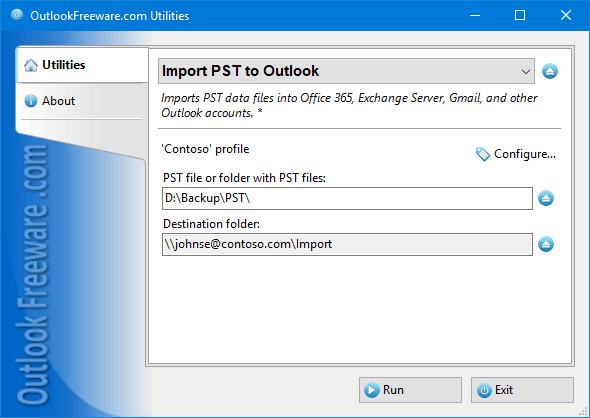
One more option is available to apply Filter to select particular items from the folder. pst file or to have a backup of inbox items. Here, only Inbox folder is selected to export to a. To export another folder, you have to perform the whole process again, i.e., a single folder or whole mailbox can be exported at a time. Note: You cannot select more than one folder to export. In this case, you have to clear the Include subfolders check box. You can export a single folder also by selecting that particular folder. To export the entire PST data, select the checkbox Include Subfolders.
Select the email account name you need to export. In the next Export to a file wizard, select Outlook Data File (.pst) and click Next. From Import and Export wizard, select Export to a file. On the topmost ribbon of MS Outlook, go to the File Tab. Launch your MS Outlook 2010 application. Stage1: Backup/Export Outlook 2010 PST data to Outlook PST file Look at the process below to migrate Outlook 2010 PST data to Outlook 2016. You can export the entire PST data or can export a selected folder to a new. For this, you can use old as well as currently backed up. pst file from your previous Outlook version. To import a PST file, you must have a backup of. Both the stages are to be followed sequentially. The migration of PST data can be performed in two stages. Using the backup of PST data, the user can move entire or selective PST data to another version of Outlook (say 2016) quite easily. IMPORTING PST INTO OUTLOOK 2016 PC
If you are moving from Outlook in one PC to another PC having Outlook on it (may or may not have different versions). To leverage use of the latest Outlook versions with new features. If the file is corrupted and emails are inaccessible. If the user wants to move emails from one email account to another email account. In general, the user needs a PST backup file in cases such as For a user, it is important to have a periodical backup of PST data in case of a PST file corruption or to move to a different version of Outlook. 
in two locations – In personal storage table (.pst) file on your hard disk or in a mailbox located on the server (when you are using Outlook with Microsoft Exchange Server). Microsoft Outlook stores emails, contacts, appointments, tasks, notes, journals, etc.

Most of the professionals today have Microsoft Outlook as their center of the workflow.






 0 kommentar(er)
0 kommentar(er)
